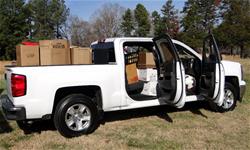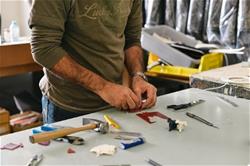The Ultimate Moving Inspection Guide
Moving in and out successfully can be a headache for any number of reasons, but most of the stress you encounter along the way can often be traced back to the same place—certain aspects of your move weren’t as organized as you had hoped they would be. However, don’t feel bad! The complications that come along with moving tend to happen to just about everybody. It takes a great deal of experience and resources to ensure that your moving process doesn’t end up too muddled with forgetfulness along the way. Some of the most difficult aspects to coordinate for those without much prior moving experience can be the needed inspections to be made around the house when it comes to your destination and your current property if renting or selling.

Don’t fret, however—below, we’ve put together what we believe is a definitive list in order to ensure that your inspection efforts are covered with consideration along the way. Try and use this guide as a baseline for your inspection planning, but be sure to consult with the professionals if there’s anything you need additional information or assessment with.
Walls and Ceiling
It may not seem like a necessary step for most people, but making a note of the condition of the walls and ceiling in both your current and incoming homes is important to keep in mind. Scratches, holes from nails, water damage, etc. all factor into a home’s property value and can often require some needed renovations based on your situation.
Floors, Floor Coverings
Floors can often make for an unexpected area for damages that can incur during moves, renovations, or similar transitions. Be sure to make a run through and inspect the floors in every room, including areas you might not expect such as garages and the like. It’s also a great idea to make a note of any and all signs of damage before and after your move.
 Lights and Lighting Fixtures
Lights and Lighting Fixtures
It’s important to ensure that lighting fixtures are functioning properly—what can appear to simply be a burnt out lightbulb can often actually be a light fixture that has stopped working. This can be cause for concern for those that are moving into a new home, as something as crucial as a porch light being out can add a lot of time and effort into your maintenance efforts starting out.
Doors and Locks
Issues with doors can make for a huge pain when you’re moving in. If a bedroom door gets jammed, a key fails to work, etc., it can cause much more of an issue for those that are tasked with moving furniture into these areas. Make a note of the status of each and every door, even if that means denoting that they are in perfect working order.
Windows
Windows can make for one of the most important maintenance aspects of a home. A poorly insulated window can cause thousands of dollars in additional utility expenses over time. A window that features cracks or similar damage will need to be replaced as soon as possible. Make sure that all windows in your home open, shut, lock, etc. without any issues, and give them a quick inspection for damage or wear.
Screens
While window screens may not seem to be as big of a deal as other aspects of your inspection, it’s important to note that they can very easily become damaged and require replacement. If your screens are in perfect working order upon your departure, it’s important to make a note of their good condition so as to avoid any confusion regarding damages that can incur down the line. If a future tenant asks “was that screen already like that?” for example, you will be able to reliably tell them no.
Fireplace (if applicable)
The old standby of many homes isn’t quite as common anymore, but if either of your locations have a fireplace, it’s important to denote the condition of it in as much detail as possible. Fireplaces can accumulate a deceptive level of damage so, if possible given the current time of year and outdoor climate, you should test out the functionality of the flu, etc. by using a starter log in it.
Smoke Alarms
Consider knocking out two birds with one stone when it comes to this one—working smoke alarms are often required in many ordinances in order for homes to pass a number of routine inspections. A good rule of thumb can be to keep some batteries handy (generally 9-volt) and replace the power source in any alarms, both when moving out of and into a home.
Carbon Monoxide Testers
These make for a good rule of thumb in regards to safety whether you’re inspecting your existing ones or simply implementing them into a new place. They’ve rapidly become a new standard for home safety in recent years, so you’ll want to look into keeping a few installed and their batteries up to date, regardless of your respective situation.
Drawers and Cabinets
This may be a factor that many movers forget to look into above most others. It is always important to check each and every drawer and inlaid storage area across every room of your house in order to ensure that there aren’t any issues with them opening or closing successfully, in addition to any range of other issues that might come up along the way.
Kitchen Appliances
Unless you plan on taking your major appliances with you or replacing them with all new pieces once you have touched down in your new destination, inspecting your appliances as thoroughly as possible will be an important requirement. Give particular care to any refrigerators in your properties, along with any and all appliances that utilize water flow in order to do their jobs. Dish washing machines and clothes washers have a reputation for being notoriously prone to leakage through regular wear and tear, and these are issues that can lead to potential water damage and more, providing more than just one issue.

